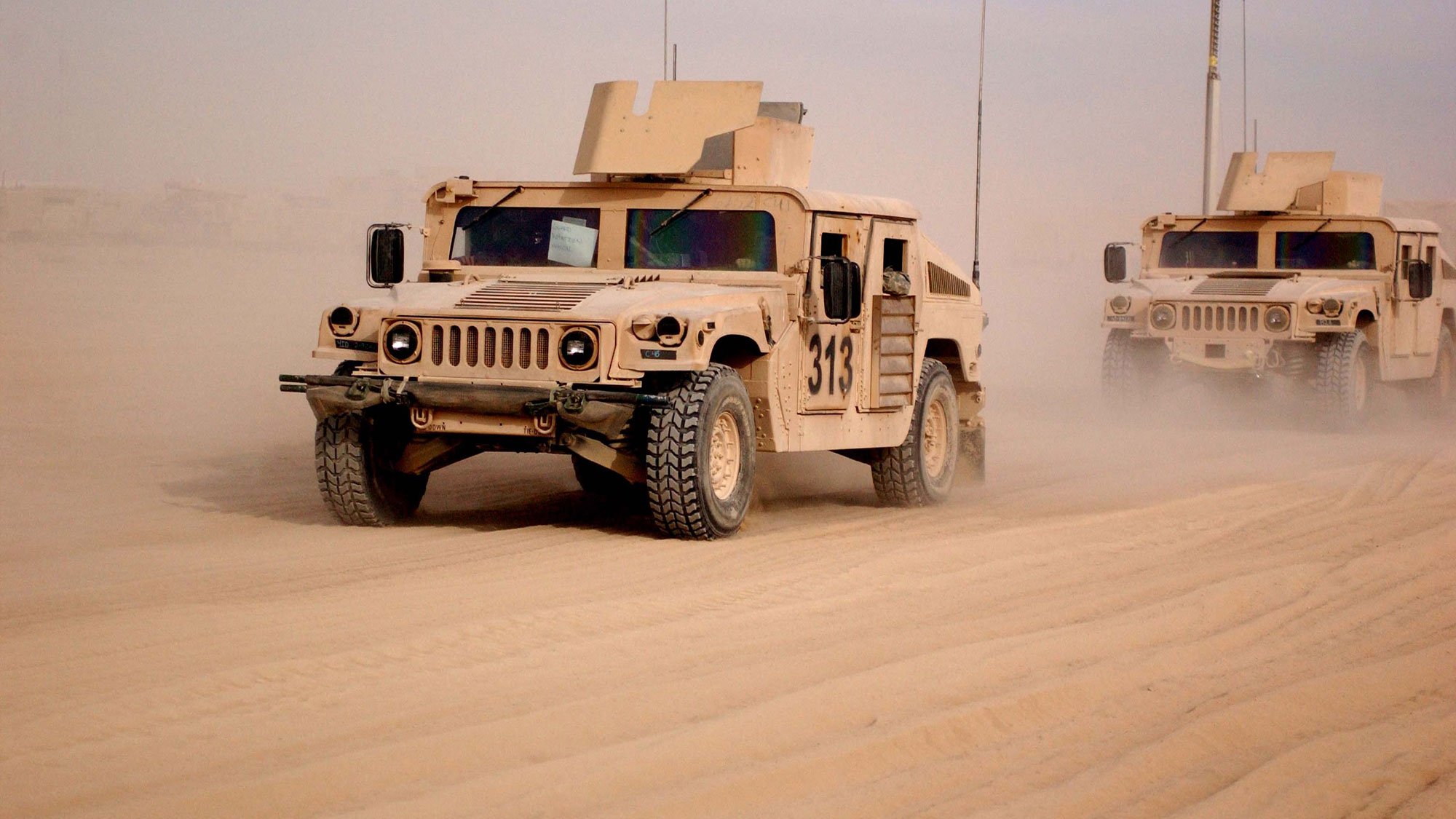

This post has been updated. It was originally published on June 12, 2023.
The most vulnerable part of a military truck is the driver. The Defense Innovation Unit (DIU), tasked with finding and incorporating new commercial technology into the military, has set a deadline of June 13 for ideas about how to roboticize the military’s existing fleet of transport trucks. These vehicles could one day include rides like the Heavy Expanded Mobility Tactical Truck, or the High Mobility Multipurpose Wheeled Vehicle, although at first the program will focus on another machine, the PLS.
Under a program called Ground Expeditionary Autonomy Retrofit System (GEARS), DIU wants vendors to prove that they can automate the driving of vehicles, with six converted a year after the contract is awarded and up to 50 or more vehicles converted within two and a half years of the contract.
“Initially, those vehicles would include palletized load systems (trucks) and could move to more multipurpose trucks like the Heavy Expanded Mobility Tactical Truck, or the High Mobility Multipurpose Wheeled Vehicle (HMMWV, also known as a Humvee) if shown to be successful,” a DIU spokesperson notes via email.
GEARS is the latest in what has been nearly two decades of effort by the Pentagon to solve an enduring problem from its recent wars. Deploying troops and equipment in a war zone, be it a whole country or even just a long front within one, means keeping people in places where supply infrastructure is limited, and that requires finding a way to resupply those soldiers.
When there’s no threat of violence against cargo transport, military supply can mirror logistics in the domestic United States, where truck drivers bring gear as needed. When violence does threaten, as it does in both insurgency and conventional warfare, trucks face threats from ambushes, roadside bombs, or attacks from the sky in the form of missiles, artillery, or bombs. Robiticizing transport doesn’t remove that risk entirely, but it does mean that any vehicle that’s attacked results in just lost supplies and equipment, instead of killed or captured soldiers.
“The Department of Defense (DoD) has an existing fleet of military vehicles for its logistics operations. Today, however, these vehicles require human operators. In deployed situations, this creates unnecessary risk to service members’ lives and introduces limits to operational tactics,” reads the solicitation from DIU. “Human operators also have work-to-rest cycles, resulting in additional time constraints. In a fast-moving conflict, the ability to continuously move supplies from one hub to another will have significant impacts on the abilities to sustain operations while maintaining the safety of troops.”
[Related: The UK is upgrading military buggies into self-driving vehicles]
By replacing human drivers with uncrewed systems, the military can overcome the vulnerability of sending humans on milk runs, and such vehicles can push beyond the limits of humans who need to eat and sleep and rest. Continuous supply allows for cargo to be dispatched to where it is needed as soon as it is ready.
Early in the US war in Iraq, getting supplies reliably and securely through the country meant deploying convoys, where several cargo trucks would carry guards and be escorted by other vehicles. While convoys allow supplies on the move to be protected, and take advantage of numbers to do so, they also present a juicy target. As the contours of fighting in Iraq changed over what’s now two decades of a US presence in the country, convoys persist as a target of opportunity for groups looking to harm or disrupt the US military in the country.
In 2004, DARPA, the Pentagon’s blue sky projects wing, launched a grand challenge, offering a prize for teams that could make a vehicle autonomously navigate a course in the desert. The 2004 challenge ended in a total bust, but multiple vehicles completed the 2005 version, in a moment widely covered as the start of autonomous driving for both commercial and military needs.
[Related: What the future holds for the Army’s venerable Bradley Infantry Fighting Vehicle]
With GEARS, DIU is looking to bring commercial tools and techniques back into the fold. To that end, the government is providing the vehicles to use as test beds for prototypes, consistent with the military’s existing cargo fleet and part of the Army’s Palletized Load System. In addition, the new add-on systems could eventually work with the Heavy Expanded Mobility Tactical Truck, or Humvees. By adapting these existing vehicles with new software and sensor hardware in what should be straightforward conversions, the Army can gain a new capability without requiring new advances in vehicle body to accommodate uncrewed operation.
“Solutions must have the ability to operate in environments inherent to military operations,” reads the solicitation. “Desired mission sets include, but are not limited to, convoy operations, waypoint navigation, and teleoperations. Solutions should be built to open architecture standards and be capable of integrating new hardware, software, and features as they become available.”
However the teams get there, the goal is to have vehicles that can run without the need for a human in the driver’s seat, or at least, move the human to a remote seat and have them drive from there. By removing the human operator from the road vehicle, the supply truck becomes essentially a reusable package for goods, instead of a prime military target. Goods may still be lost in attacks, though reliably remote navigation will let the military know when and where such attacks occurred.
In the meantime, the military can supply its bases less like caravans under attack, and more as nodes in a big transportation network.
This story was updated to include clarifications and a statement from the DIU about what types of vehicles will be retrofitted and in what order.
